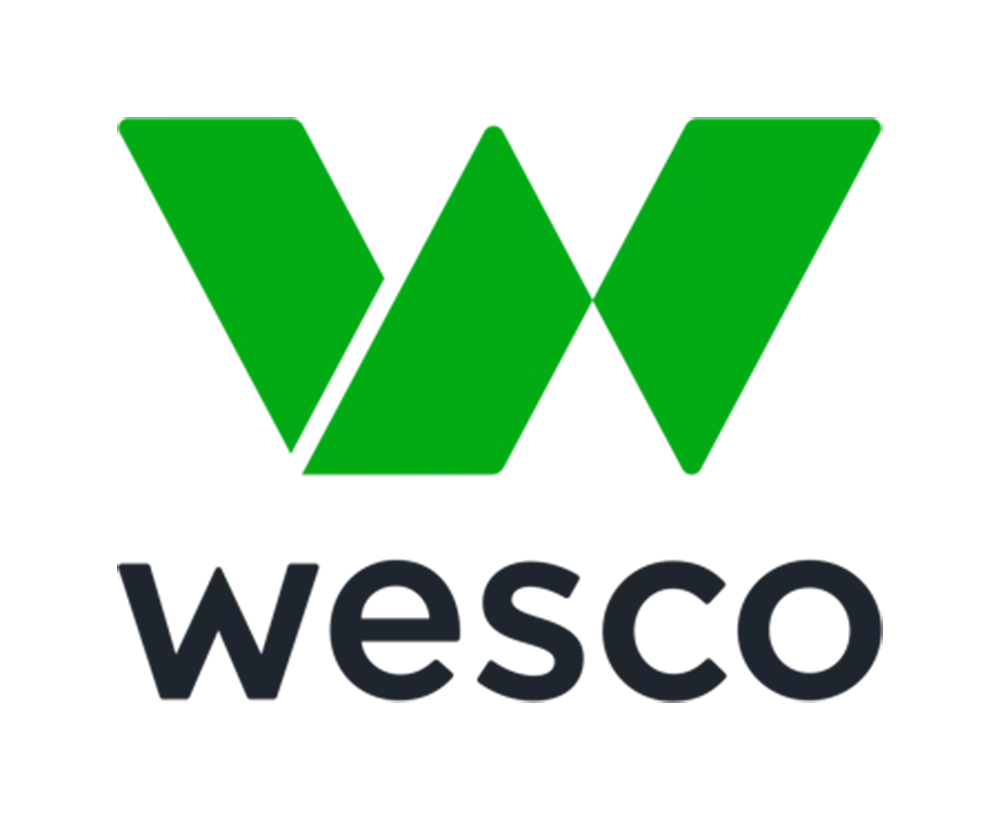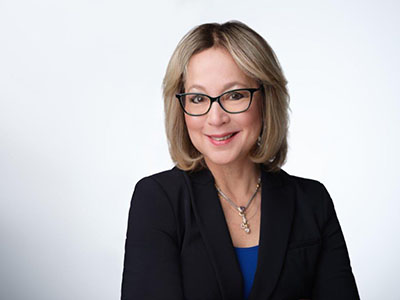Wesco’s Tara Dunning – ‘It's a real privilege that people trust us to provide and be there for them’ Dunning discusses how Wesco works with integrators, supplier partners to ensure customers’ security needs are met, and more

By Cory Harris, Editor
Updated 12:46 PM CDT, Wed October 18, 2023

NEW YORK—For Tara Dunning, VP of global security at Wesco, customers are not just defined as end users.
“We see our customers as everyone, not just the integrator but end users that they serve,” she told SSN during the Security Industry Association’s Securing New Ground (SNG) conference in NYC. “Our supplier partners are as much as a customer of us, and we're nothing without them.”
 On day one of SNG, Dunning participated in a panel discussion, “Security Megatrends: Taking the Industry’s Pulse and Vitals,” along with Brivo CEO Steve Van Till and Kasia Hanson, global director, security ecosystems and partnerships, Intel Corp., that focused on some of the top trends in the security industry today, including artificial intelligence (AI) and cybersecurity.
On day one of SNG, Dunning participated in a panel discussion, “Security Megatrends: Taking the Industry’s Pulse and Vitals,” along with Brivo CEO Steve Van Till and Kasia Hanson, global director, security ecosystems and partnerships, Intel Corp., that focused on some of the top trends in the security industry today, including artificial intelligence (AI) and cybersecurity.
Following her panel, Dunning sat down with Security Systems News to discuss how Wesco works with all its “customers” to “build, connect, power, and protect” the world.
SSN: What are some of the things that Wesco is currently working on to help companies meet their physical security needs (video surveillance, access control, intrusion detection)?
DUNNING: A lot of what we're doing is ensuring that we are up to date, and that we have a pulse on the customer as well as the integrators and the supplier partners and ensure that we can help aggregate disparate solutions, sort of as an aggregator because we don't make anything.
We really have this 360-degree view of the whole value chain, and so we're very focused at looking by verticals and customer segments, and based on the need, how do we help make people aware of the opportunities to serve their customers and add value. So, we see us ourselves as an aggregator and enabler.
We're very focused on a lot of these trends, which is why Wesco is very active in SIA. I think I mentioned I'm on the SIA Board of Directors and Advisory Committee for the Security Megatrends, and Wesco also has people participating on the AI Committee and ESG [Environmental, Social, and Governance] Committee. So, we seek to help educate and advocate and work with customers to really understand how we can take the complexity out of all of it and also provide a valuable education.
We do a lot of volunteering where we're spending time working with the Women in Security Forum (WISF) or the Partner Alliance for Safer Schools (PASS). We see it as our job and service to the industry to help keep the community educated.
We have been heavily investing, and this is a journey - digitalization, digital transformation is a journey, and our CEO and his team have been talking about it for a very long time. So, we continue to invest in improving the customer experience and creating a more frictionless experience for everyone.
We see our customers as everyone, not just the integrator but end users that they serve. Our supplier partners are as much as a customer of us and we're nothing without them. It's a lot of work, but it's a great place to be and they're very much about continuing to try to innovate and understand where their gaps are. I think the last few years have been a really interesting challenge for the industry with the supply chain, so we've adapted and learned as well and continue to invest.
I think the other thing is we're very heavily invested in continuing to develop our supply chain services, which at the simplest level is helping an integrator or a dealer go in and get the material just in time. It's pre-provisioned, it's kitted with its IP address, and they can go in, plug and play and walk away. We see that as a way to provide value correspondingly. Further up the food chain, we may be doing much larger, larger projects and so we continue to invest in that.
We’re very, very focused on the impact of IoT and developing tools to be able to support bringing all of that together for a customer. So, for example in a building or in a data center, you heard [Wesco EVP and GM] Bill [Geary] talk about that there may be 15-20 different providers, whether it's LED lights or cooling or you name it. And so, we see it as our job to help orchestrate and provide that solution in a timely fashion, if it's sensors or controls to help aggregate that and provide a single pane of glass, if you will, or the ability for the end customer and integrator to work on that.
We just opened a state-of-the-art innovation center in Glenview, Ill. It's one thing to talk about the individual technologies and personally see pieces of them, but when you see them all collectively in action, and then you can interact with them, as well as we could do testing or demos - all that kind of stuff - it's very different.
That center was designed to allow people to collaborate, to test new solutions, to create new ideas, and frankly work on what is the road map for their organization. From the integrator community to the end user, it's been incredibly busy for us, which is wonderful because there's not another spot right now. I don't believe, in our space at large where there's an agnostic place that you can go, and you can learn and you can try new things. It was designed in that fashion.
I think our partners, both our supplier partners and our integrated partners, see something that they can use or partner with, so it's almost like enabling people to come together, communities to come together, and we love to be in the center of it.
SSN: In addition to the innovation center, Wesco recently formed an Innovation Partner Ecosystem and expanded its Internet of Things (IoT) Advisory Services earlier this year. How will these new services benefit your suppliers and strategic partners?
DUNNING: Being in the middle of the value chain and working with all these different partners, it's frankly our responsibility to drive innovation. So, if you think about the IoT Advisory Services offering that was built based solely upon the voice of the customer, you talk to any end customer today, and if they tell you they have a fully defined five-year IoT road map, I want to meet that person.
And that's because it's not super clear, there's so many different technologies and things are changing very much all the time. But that practice is built upon the best practice we've had inside of the company for many, many years, which is our TSS [Technology and Support Services] team, our technical and engineering team that has been working with end customers and integrators for 30 years,
If you think about that evolution and now, we can look across all the different technologies and help that customer define that road map with our key partners, it's going to make it easier for that end customer to get the value. That continues to be a big part of what we're doing.
What we talk about as an organization is two things. First is our vision, which is to be the best tech-enabled supply chain solutions provider in the world. It is our responsibility to live up to that vision. Secondly, our mission is to build, connect, power, and protect, and the only way that you can build, connect, power, and protect is you need to have a road map to do so. I think, for us, we're still in the early days in some ways, but I'm really proud of the progress we've made as an organization.
SSN: How is Wesco helping its customers, suppliers and partners prepare for and leverage a digitally transformed future?
DUNNING: Wesco also needs to walk the talk, and we've invested heavily in ease of doing business with us in a complex world. We're a big company; we came together with Anixter in June of 2020. We continue to invest in digitizing how we operate, whether it's our warehouses, whether it's our CRM solutions, our e-commerce solutions.
We believe that we need to leverage technology to improve our own experience, as well as our customers’ experience, and obviously everything we've said in terms of investing in highly specialized teams who become subject matter experts in security, in infrastructure, in audio/visual, etc.
The other trends, we look at it by vertical. We really focus on what solutions make sense for that sector, and that's how we kind of work with our ecosystem of not only integrators and contractors, but also the suppliers and the software providers.
My favorite part of that is the fact that we can do it globally, which is one of our biggest superpowers. Also, since our customer base and our portfolio is so diversified, it is highly likely that most of the time, one of our customers that has a unique need, we have already found a similar need and deployed a solution for a different customer.
Unlike other solution aggregators or technology providers that are also distributors, we have warehouses. We have operations, we have technical teams, we have sales and marketing teams, finance, we do business and local currency, and a lot of customers want to have a similar experience no matter where they go in the world.
We can cover just about all of it. And through that, we're constantly working on how to simplify the complex.
SSN: What are some of the challenges that your customers are facing (ex. supply chain) and how is Wesco helping to address these issues?
DUNNING: It's a great question. We talk about it all the time because of the size of our company and how many countries we operate in. There's always going to be a challenge. So, we focus very much on building resiliency and the ability to balance the business.
But I would say certainly in certain sectors, inflation, labor complexity. The world is becoming very complex. The supply chain is becoming very complex. There are more and more offerings, and with macro trends and currency issues we were always focused on trying to do our best to shield, certainly during the supply chain crisis. Even cost of working capital with interest rates right now, that's a challenge for a lot of customers - small customers and large - so they lean on us to help create that predictability, that sort of supply chain assurance, and help build resiliency for them around the world.
Our customers really rely on us to kind of just be predictable and dependable, and the supplier partners the same. That's why we look at the whole ecosystem as our customer. We help our suppliers in certain markets where they don't have the full ability to service and ditto for our customers. It's very complex, and it's an exciting place to be because we feel it's a real privilege that people trust us to provide and be there for them.
SSN: What topics have stood out to you during SNG?
DUNNING: It's so interesting. I would say, for sure, AI and cyber security as we've talked about. There’s certainly this concept of changing economic conditions and removal of industry boundaries.
I would say workforce development continues to be a big challenge for everybody, and this is a very mature industry.
I think there is a strong ESG component that we have. We have an obligation, and Wesco is very committed to that. We just published our [ESG] paper on that. I think that's really important.
Also, the move to different business models – as a service - and trying to scale whether it's leveraging native cloud solutions or hybrid solutions.
SSN: What other trends are you seeing in the security industry heading into 2024?
DUNNING: The need to have that interoperability. If we think about it, we're doing our job as stewards of the industry. We can't create these disparate proprietary systems.
We really need to focus on interoperability because that's in the customers’ best interest, and it's also in the best interest of hitting all these other trends and being able to advance and keep up with the pace of change. I think interoperability is a really important trend, and also the ethical and safe use of data and how we manage the data, which is data privacy.
The other trend which is very clear, and a number of panelists hit on this today, is IT/OT [information technology/operational technology] convergence. Everything's on the network now, and then you've got some stuff in the cloud - software, different applications, the sensorization of everything – I mean, there's so many sensors everywhere!
I would say those are probably the biggest trends, in addition to what we talked about today. So, for sure, proliferation of sensors and the convergence of all these networks.
Comments